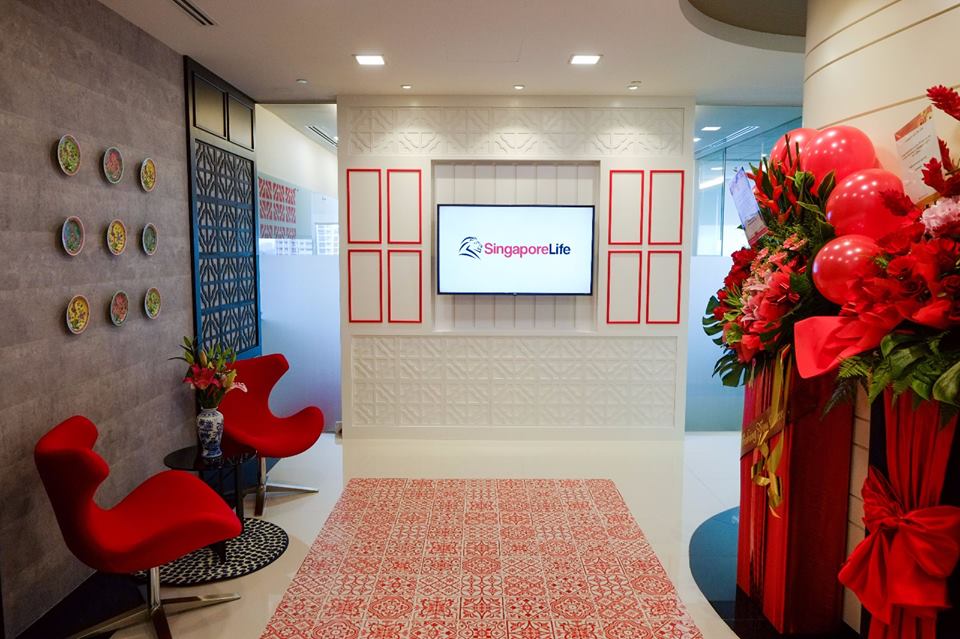Let’s suppose you accidentally tore your ligament in the knee while exercising in the gym tomorrow. Do you know how much you’d need to pay for medical fees?
Before we reveal the answer, there’s a saying amongst Singaporeans: it’s cheaper to die than to fall sick in Singapore.
Sure, there is the basic health insurance MediShield Life that all Singapore citizens and permanent residents (PR) are automatically signed up to (and it comes out of your pay anyway), but it covers only basic public hospital treatments and comes with many limits. Even with the Integrated Shield Plan (IP) booster, patients will still have to pay at least 5 percent of the bill while the insurer pays the rest.
The island nation is currently facing an ageing population; within the span of a decade, the percentage of residents above the age of 65 has increased from 8.7 percent in 2008 to 13.7 percent in 2018. An elderly population is more susceptible to disease and disability.
Meanwhile, the cost of healthcare is also expected in increase by 9.1 percent in Singapore in 2019, according to a survey by Willis Towers Watson. Let’s consider the most common elderly related injury – hip fractures. A partial hip replacement can cost you upwards of SGD6,278 in a public hospital after subsidies. Incidentally, the answer to the first question of this article, is around SGD3,086 after subsidies, according to estimates by the Ministry of Health (MOH).
The increasing cost, paired with an ageing population, puts incredible financial burden on not only the patients, but also the governments (due to the subsidies) as well as insurers (due to payouts).
Insurtech to save the day?
Arguably, Singapore’s healthcare system is in a much better position than its Western counterparts, notably the US and the UK. Having said that, insurers cannot rest on their laurels.
A report by PwC revealed that globally, three out of four insurance companies view fintech as a challenge for the industry. However, only less than half of them claim they have fintech at the core of their corporate strategies. Alarmingly, less than a third of them are exploring partnerships with fintech companies; while only 14 percent of them actively participate in ventures and/or incubator programs.
Currently, Singapore is one of the top five countries for insurtech investments globally, according to figures by Fintech Global. The top five countries make up three quarters of all deal activity in insurtech since 2014, the other four countries being US, UK, Germany, and India.
Although there are no shortage of insurtech innovation labs in Singapore, it is a highly competitive sector. If investor activity is any indication, insurtech companies need to deliver results, and soon, or be ready to face the music.
It’s not just about money; for Singapore’s ageing population, the clock is running out. Insurers and insurtech companies must quickly find a solution to ease the immense strain on the entire healthcare system, or Singapore might quickly face similar problems that are currently plaguing its Western peers.
Singapore Life

Source: Singapore Life
The most obvious insurtech use case is to make the purchasing process entirely digital. This is exactly what Singapore Life has aimed for. Instead of using brokers or agents, Singapore Life is offering insurance entirely online. The company also launched a Stay Active program, which allows users to sync their fitness tracker or pedometer with the insurer to receive awards and price cuts.
Through promoting better health and wellness, the country can hope to reduce the risk factors facing the elderly cohort, which can help alleviate some of the pressures on the system. In fact, this strategy is seen repeated by several of the insurers listed below, where they prioritise promoting health and wellbeing for their customers.
CXA Group

Source: CXA Group
One of the ways young insurtech players in Singapore are changing up the industry, is by tapping into corporations instead of going directly to individuals. Startup CXA Group is attempting to make insurance more accessible and affordable by working with corporations to offer their employees health-flexible premiums.
Traditionally, employer healthcare schemes are rigid and forces employees to use a particular service. CXA’s approach provides a selection of programs and options that can be tailored to an employee’s preference, which in turn can help lower overall premiums for employers.
This is especially relevant in Singapore where the government has enforced the Retirement and Re-employment act; employers are not allowed to dismiss any employee based on an employee’s age. An ageing population signifies a shrinking workforce, which explains the re-employment scheme that encourages workers to work beyond conventional retirement age. CXA’s approach ensures employees get adequate coverage, without putting additional stress on the insured, while also keeping overhead costs low for employers.
The startup also launched a one-stop, self-service platform earlier this year that enables employers to provide employees access to a range of health, wealth and wellness offerings, personalised based on the individual’s health and life-stage data. The platform also comes with an e-wallet function that allows employees to purchase insurance offerings using funds released by their employer on the platform.
Prudential Singapore

Source: Prudential Singapore Screengrab from YouTube
Prudential Singapore on the other hand is tackling the healthcare problem with a two-pronged attack. On one hand, it is looking into preventive healthcare with the help of artificial intelligence (AI).
The insurer will roll out a health and wellness ecosystem that will be integrated on a single platform in efforts to help customers better manage their personal health and fitness. The platform will be fitted with symptom checking and health risk assessment functions. It will also feature doctor discovery and virtual consultation, as well as wellness coaching and activity tracking.
Additionally, Prudential is also looking to boost its internal operational efficiency by working with fintechs Kyckr, Moxtra, and Sqreem. Kyckr will be helping with the development of compliance solutions, while Moxtra helps enhance productivity and collaboration. Sqreem, on the other hand, creates pattern recognition solutions that allow organisations to identify links and associations among digital activities.
AIA Global

Source: AIA Global
Partnerships for an incumbent insurer isn’t just limited to financial services either. One of the rising star in the Singapore medtech scene is MyDoc. The digital healthcare provider is currently partnered with AIA to help customers identify health risks, as well as encourage customers lead a healthier lifestyle.
In return, AIA will reward its members who’ve completed health screenings with MyDoc with points under its AIA Vitality wellness programme. Customers can exchange the points for lower premiums, discounts, exclusive offers, and even cash back rewards.
Interestingly, MyDoc has also been noted to help reduce healthcare cost, with some studies quoting potential cost savings as high as 28 percent. On top of benefiting customers, it may seem that MyDoc has the potential to help save medical spending in general, which will in turn lower costs for the insured, the government, as well as insurers.
AIA goes one step further, taking advantage of today’s increasingly connected population. Most recently, the insurer announced a partnership with telco giant Singtel to offer the wellness digital platform on the My Singtel app. Customers can earn mobile data rewards with every step they take, while also receiving content related to health, fitness and nutrition.
Bonus: UCARE.AI
Ucare.ai is strictly speaking a medtech company. It is using deep learning and neural network algorithms built on existing healthcare data to help prioritise healthcare resources, while reducing preventable hospitalisation. This will ultimately lead to significant annual savings in the medical industry, which will have a knock on effect beyond the healthcare industry, with the potential to change the way insurtech works.
On top of that, Ucare.ai has also released an AI-powered predictive hospital bill estimation system in December 2018; the system is currently live at the Mount Elizabeth, Mount Elizabeth Novena, Gleneagles and Parkway East hospitals.
According to the company, the system can dynamically generate personalised and more accurate bill estimates based on relevant parameters such as a patient’s medical condition and medical practices, as well as taking into account their age, revisit frequency and existing co-morbidities including high blood pressure and diabetes.
Prior to this, bill estimations were based on statistical calculation of previous hospital bill sizes up to two years ago. With the new bill estimation systems, insurance companies can also better estimate payouts as well as take into account any additional relevant processes that may be needed.
Featured image credit: Pexels








